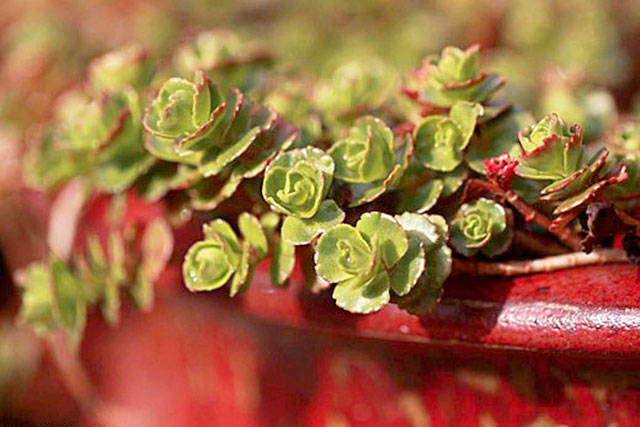It’s hard to briefly describe succulents — a group of plants that are as diverse as they are stunning. It may help to highlight the fact that succulents, while they share the characteristic of having fleshy leaves, stems, and/or roots that can store water, are not a scientific class of plants. Succulent is a description, not a botanical taxonomic classification.
More than 30 plant families claim members described as succulent, including Cactaceae … the cacti family. It’s fair to say that if you see a plant with plump fleshy parts, thriving either indoors or out, you would be correct to refer to it as a succulent.
Succulents also share the quality of being easy to grow both indoors and out. By their succulent nature, they are drought tolerant. They survive and even thrive in poor soil and can tolerate some benign neglect.
The quickest way to kill a succulent is by over-watering. Their reputation as desert plants might make one think they require direct sun, but there are succulents for all light conditions. Sansevieria, often called “mother-in-law’s tongue,” will burn in direct sun but grow well inside in lower light conditions.
A list of tender succulents that make excellent house plants must include varieties of the genera Crassula (includes “jade” plants), Aloe, Aeonium, Echeveria and Gasteria to name a few.
Hardy or cold tolerant succulents have shallow roots making them perfect for pots, rock gardens, flower bed edging or even septic system areas. Popular hardy succulents for USDA climate zone 8b, which includes most of the lower elevation of the Olympic Peninsula, are often referred to as stonecrops, loosely meaning the genus Sedum.
Sedums are an eccentric group of perennial plants that make excellent ground covers. Most enjoy the sun but graciously tolerate some shade. Sedum spathulifolium “Cape Blanco” is native to the Pacific Northwest and adds a wonderful gray-blue tinged with pink accent to the garden. Other striking Sedums that add a pop of chartreuse color are Sedum “Angelina” for any light condition and Sedum makinoi “Ogon” for dappled sunlight.
There are so many fantastic hardy succulents that it is hard to suggest just a few. A sampler would not be complete without looking at genera that include: Sempervivum, commonly known as “hens and chicks”; Delosperma, including “ice plant”; and Lewisia, another native plant with stunning blooms from spring into summer.
If these small stunners don’t provide enough interest, consider the prehistoric looking Agave parryi, a lovely blue-gray plant with ominous spines on fleshy leaves that can grow up to a foot long. While hardy, this beauty may need some protection from too much winter rain and extreme temperatures.
The best way to get started growing succulents is to visit local nurseries and see what’s available. Warning, once you start gardening with these beauties for both indoor and outdoor gardens, collecting them can become addictive.
Take some time to understand hardy versus tender plants. Unfortunately some garden centers may put tender succulents outdoors during nice weather, confusing the novice gardener.
The popularity of succulents is definitely on the rise. They are amazing plants that add an artistic quality to any garden. They have become so popular that there is now an “Idiot’s Guide to Succulents” book available.
That said, smart people everywhere are discovering the seductive and beautiful world of succulents.
Susan Kalmar is a Clallam County Master Gardener.


